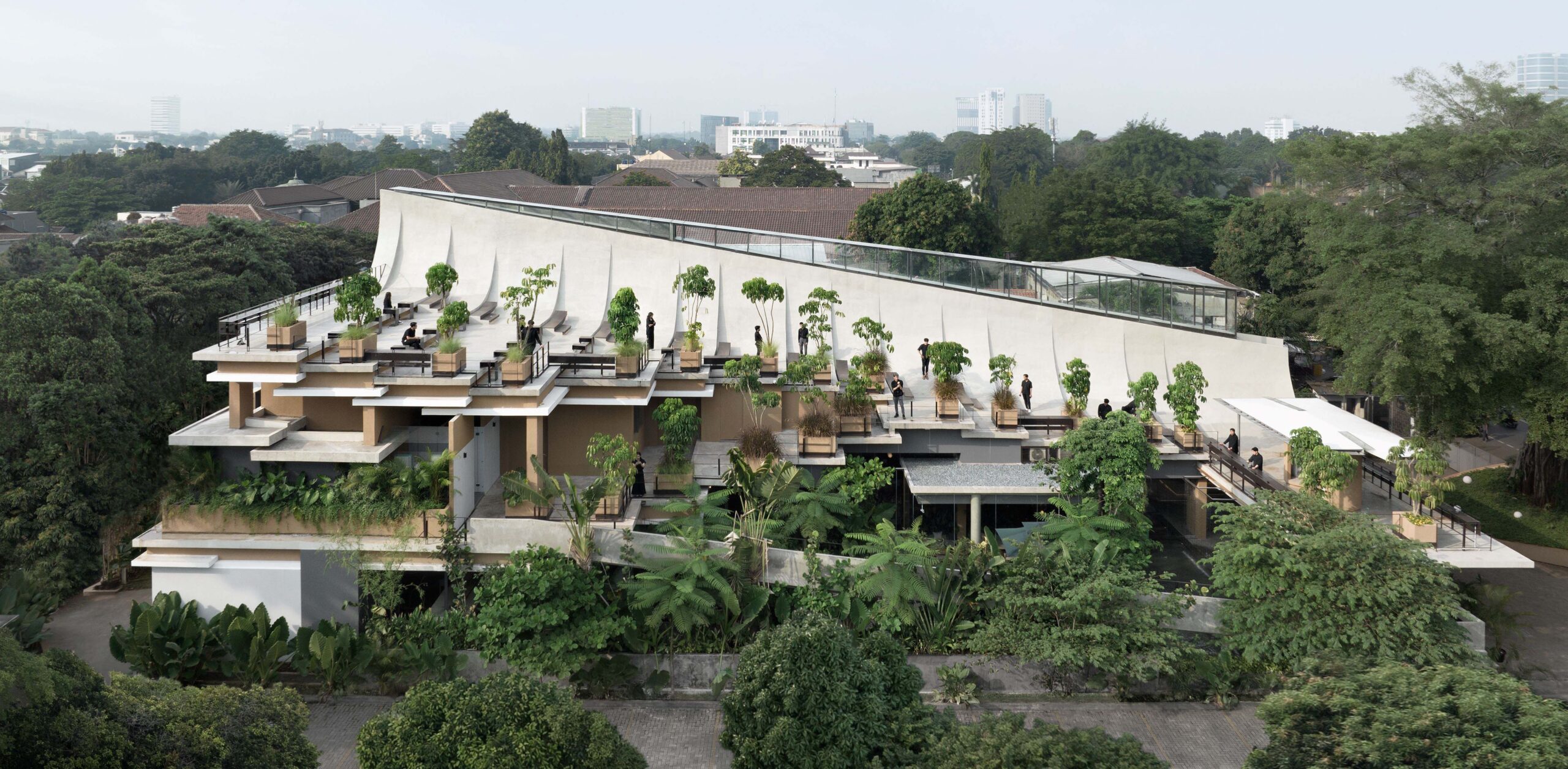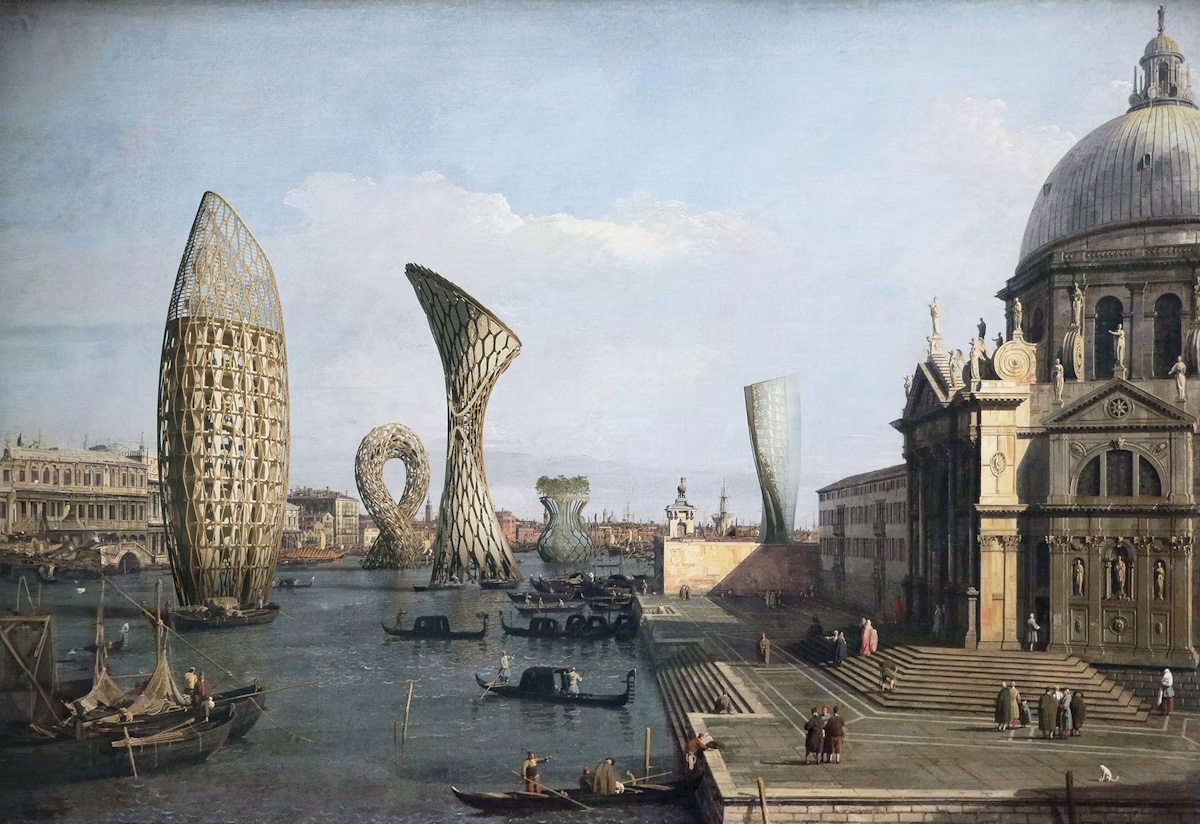Minecraft Urbanism: Can Masterplans Still Surprise Us?
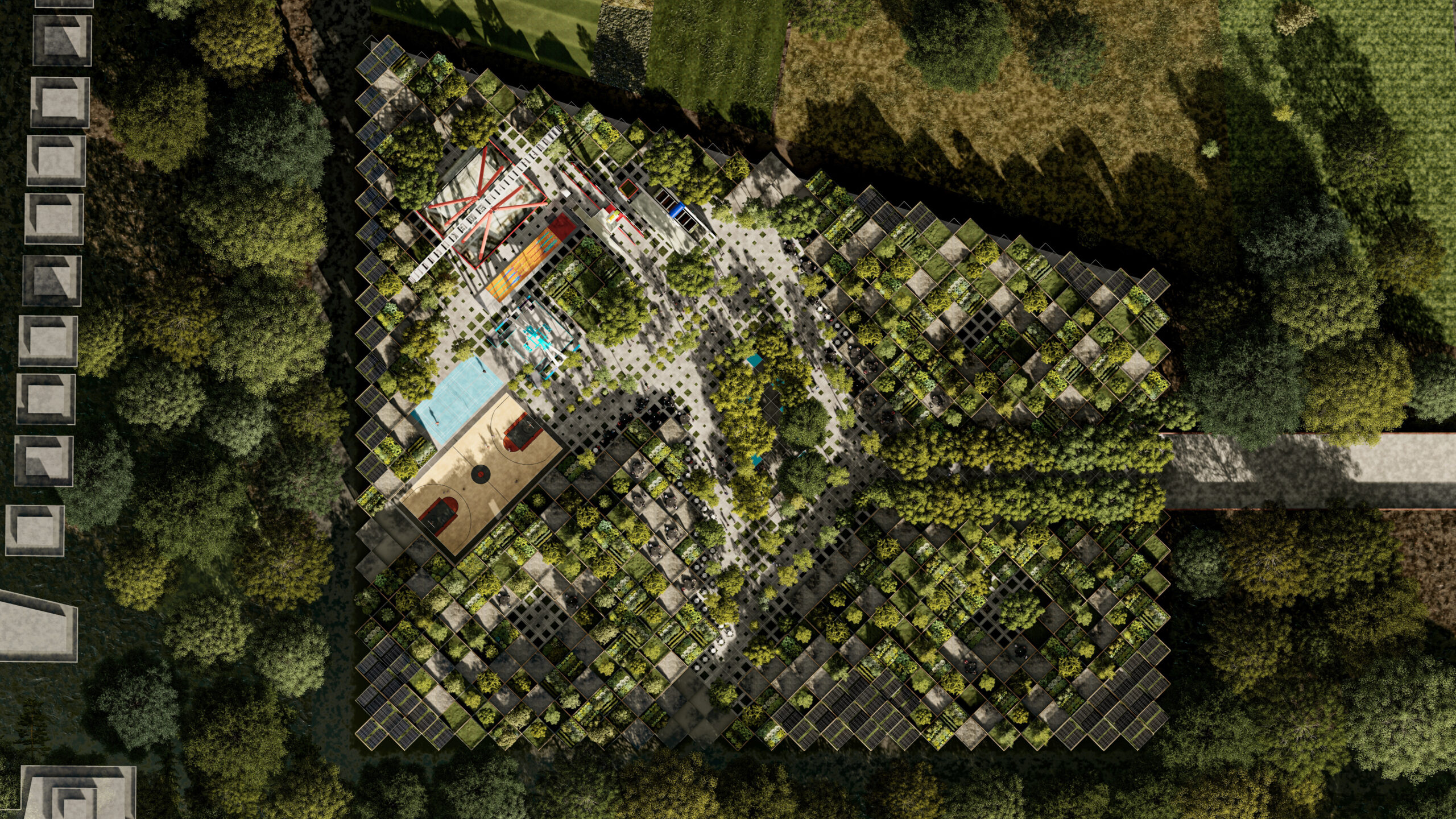
The winners of the 13th Architizer A+Awards have been announced! Looking ahead to next season? Stay up to date by subscribing to our A+Awards Newsletter.
“A vision of sustainable diversity,” a “multifaceted and inclusive experience that reflects the rich tapestry of the community.” Stop us if you’ve heard this marketing spiel before. Or something similar.
It’s not necessarily a criticism, more an observation. Leafing through — digitally at least — the blurb written to support the impressive Eco Urban Oasis rings familiar bells. A neighborhood-sized development currently under construction in Pakistan, Reparametrize Ateliers‘ design “revolutionizes urban functionality by integrating a hierarchy of spaces.”
Breaking that down into plain English, the masterplan includes a number of key elements. Firstly, it provides residential, commercial, entertainment, recreation and leisure spaces, giving people a multitude of reasons not to leave the district. Many of these areas have been conceived based on principles of biomimicry. Inspired and rooted in nature, not only do they significantly improve the development zone’s aesthetics with things we all agree look nice — plants, trees, flowers and grass — they boost both physical and mental wellbeing in the process.
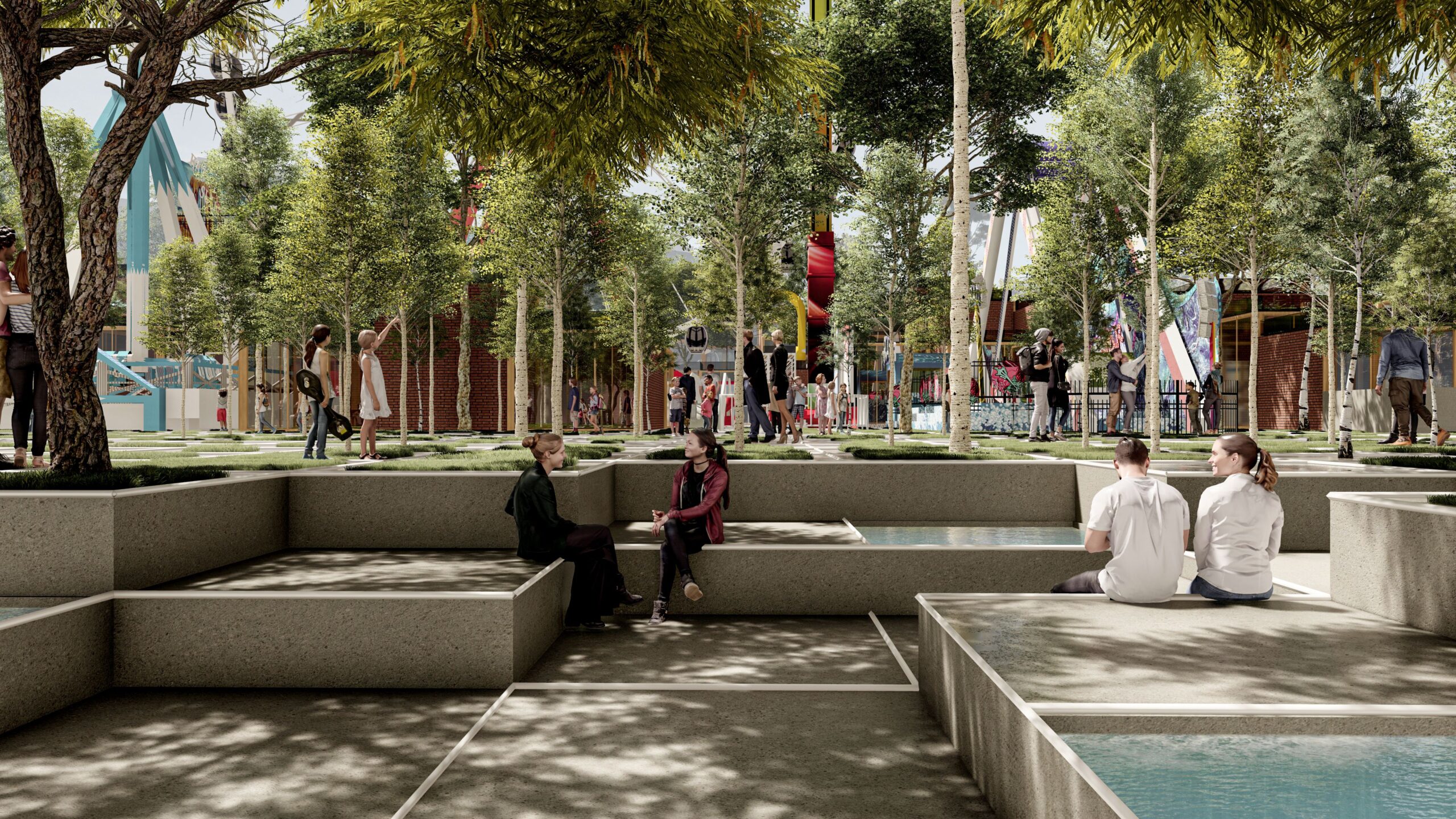
Public realm within the Eco Urban Oasis by Reparametrize Ateliers, Khushāb, Pakistan
The more time we spend in greenery the better we feel, and the more tolerable the searing temperatures facing South Asia become. Foliage also improves resilience against other extreme weather patterns, including floods and storms. Although given the ferocity of many systems in the region, cast in brutally sharp relief last year when monsoon rains left millions stranded and scores dead, this is one challenge even the most progressive architectural blueprints will struggle to contend with.
Elsewhere, Eco Urban Oasis incorporates passive design en masse. Green roofs “self-harvest,” large glass windows flood interiors with natural light. In turn, air flow into and out of the structures is maximized, while the trees lining the avenues they sit on provide much-needed sunblock. There’s still a need for artificial climate control, of course, but by including smart technology such as motion-based energy generation, sustainable solar electricity production, optimized waste management and high efficiency aquaponic irrigation systems, the power needed to drive everyday operations within the site is significantly reduced.
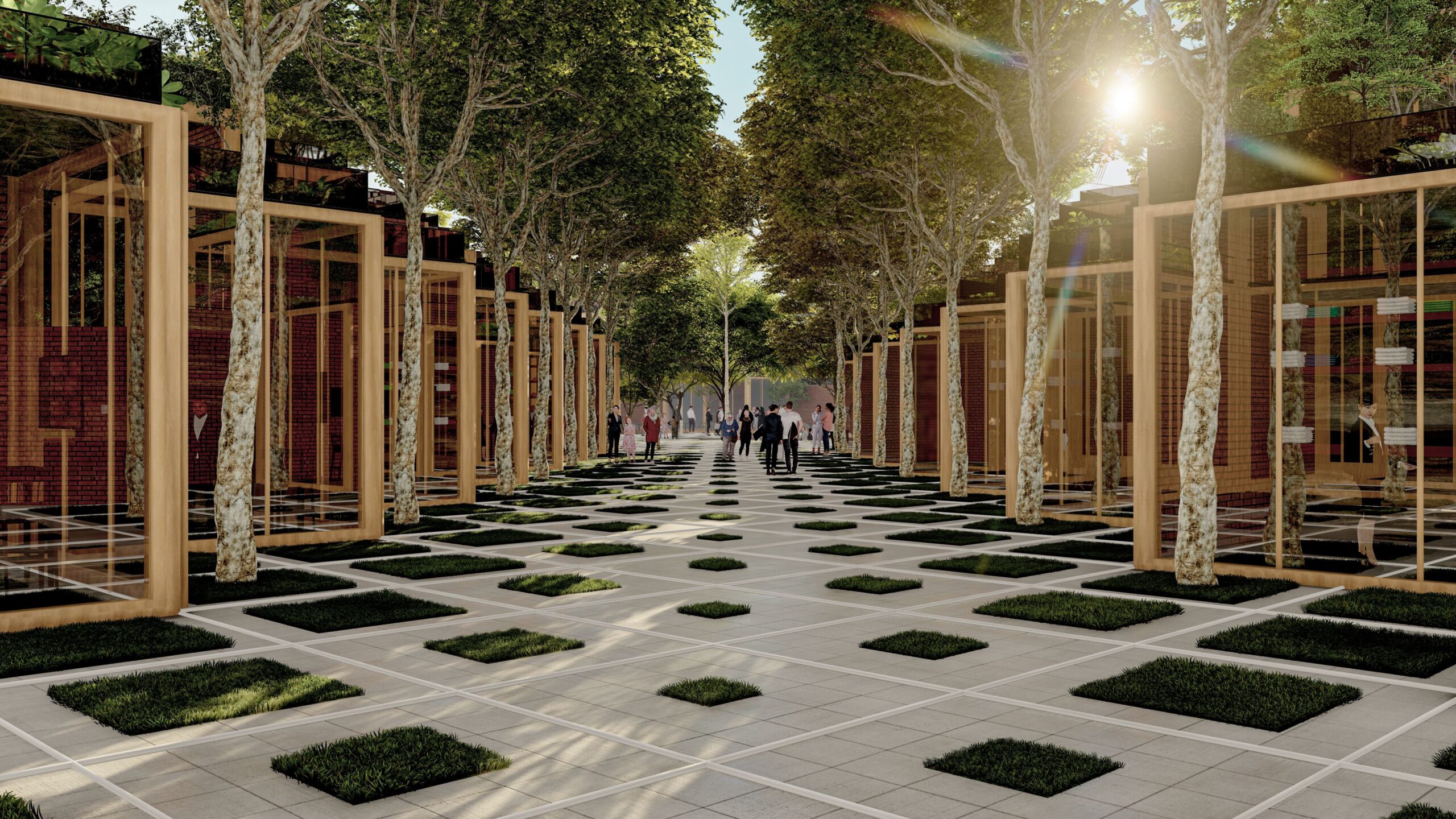
Tree-lined avenues, biophilic design and passive structures dominate Eco Urban Oasis by Reparametrize Ateliers, Khushāb, Pakistan
Reparametrize Ateliers has also considered some of the growing concerns of urban residents in an age when data is driving moral panics – rightly and wrongly. According to the World Health Organization, Air pollution is believed to account for around 7 million premature deaths annually across the world, the majority linked to outdoor atmospheric conditions. In Eco Urban Oasis, monitoring stations are integrated, allowing citizens access to real time information about what they are breathing-in. Should spikes occur, taking appropriate steps to minimise exposure becomes much easier if checking levels of gases like carbon dioxide and nitrogen oxides, and fine particulates, is part of our everyday routine.
The bold thinking at the centre of Eco Urban Oasis isn’t just matched by the visual look, in many ways it’s superseded. Fully modular developments are becoming more commonplace but remain in the extreme minority. This is one example, and that physical makeup leans perfectly into a design choice that nods to a number of video game worlds. Perhaps most notably Minecraft, but also — fittingly — retro city builders such as the SimCity franchise.
Seen from above, Pakistan’s most unique mixed-used project could be mistaken for a collection of pixellated squares. You can almost see your cursor hovering over each, ready to demolish, drag and drop, add another floor or change the zoning to suit changing needs. In practice, repurposing would require significantly more effort than a mouse click or three. Nevertheless, this emphasises the advantages of modularity — we are building for a future in which full scale deconstruction, one of the most wasteful sides of architecture and development, may no longer be needed. Let alone deemed acceptable.

Aerial view of Eco Urban Oasis by Reparametrize Ateliers, Khushāb, Pakistan
This bigger picture approach brings to mind another discussion, one that’s much harder to determine the outcome of as it remains very much an emerging issue. To ask a reductive question: are we witnessing the death of autonomous architecture? Standalone schemes are now often too expensive, or not cost effective enough, compared with larger, district-wide development and redevelopment. This makes sense when we consider the extent of the global housing crisis, and the rapid growth of populations in many regions — including South Asia. Trends that could mean large-scale placemaking will become the standard approach to making anything we can live, work or play in.
It’s a solution in response to changing and pressing needs of society and civilization. Just like renting an apartment within an IRL version of a sandbox style video game, the concept of post-truth and very visible collapse of ecosystems and climactic norms, Eco Urban Oasis, and comparable schemes, could be evidence we have started a fresh chapter of the human story from the one bookended by mechanization, modernity and industrialization. A future which is genuinely unknown and as such wildly unpredictable. And one that may require us to forsake self-interest, eccentricities and autonomy in favor of collectivist efforts.
Seen in this light, Reparametrize Ateliers’ masterplan, and other top down neighborhood developments, may still feel jarring to those who love the random chaos of the cities and towns of centuries past. But they also feel necessary in the face of so many mounting pressures. One of which is timescales for delivery of workable answers. Of course, what this means for us as individuals is a far more existential question, and the answer remains shrouded in the mystery of things to come.
The winners of the 13th Architizer A+Awards have been announced! Looking ahead to next season? Stay up to date by subscribing to our A+Awards Newsletter.
The post Minecraft Urbanism: Can Masterplans Still Surprise Us? appeared first on Journal.



















